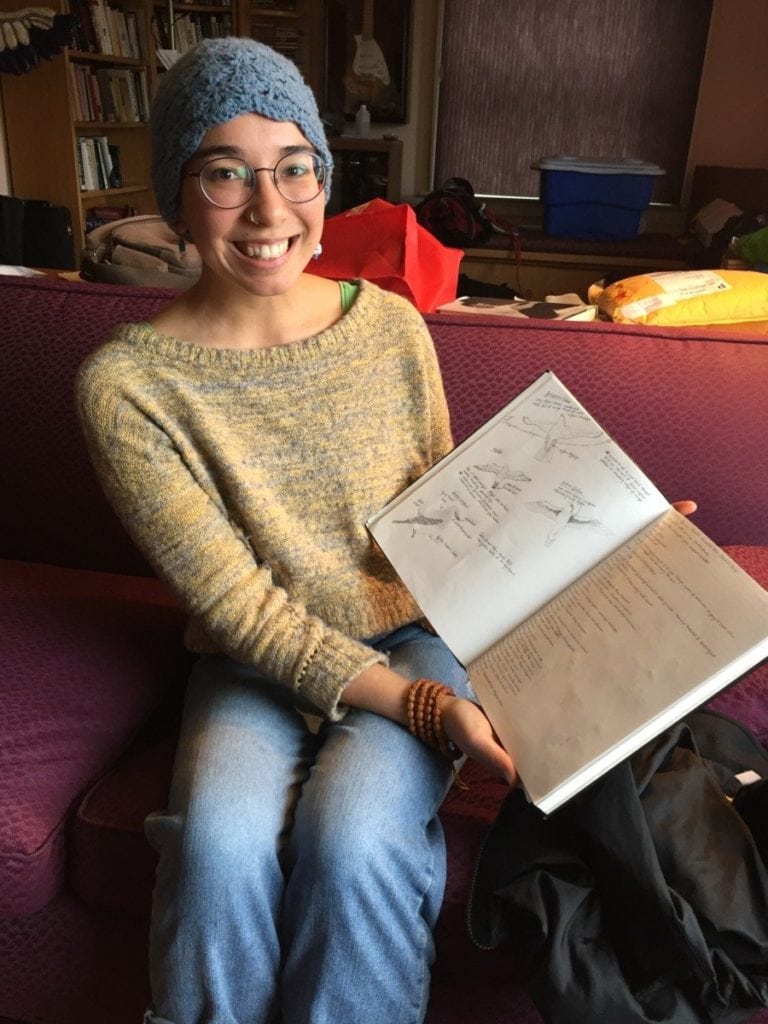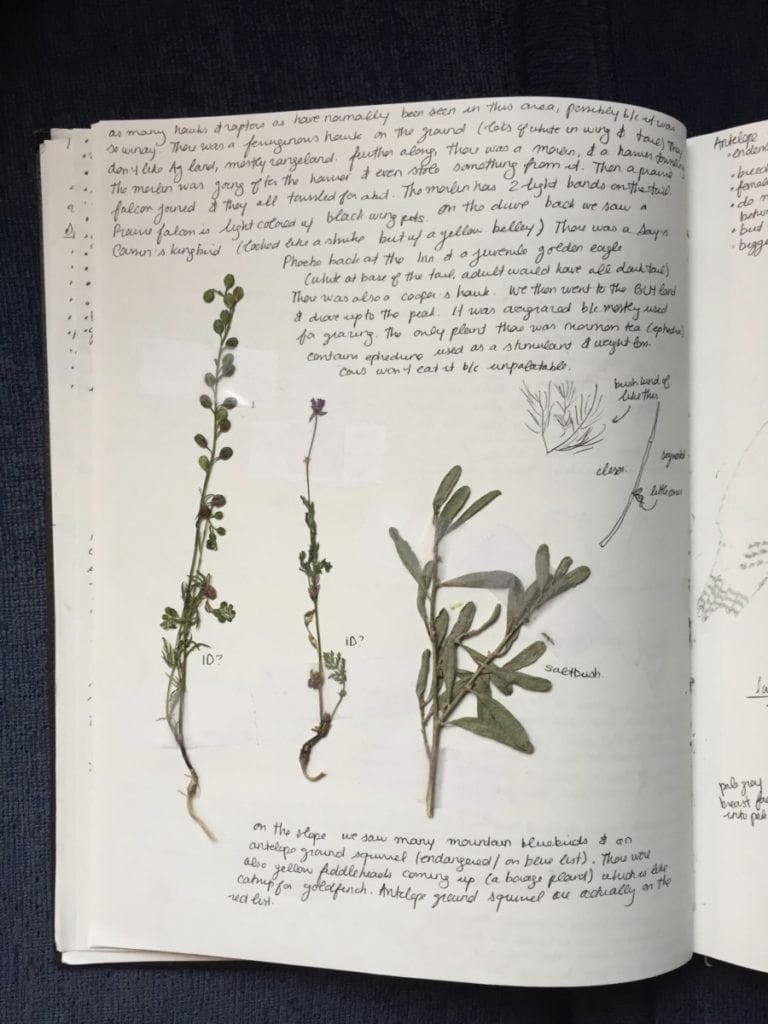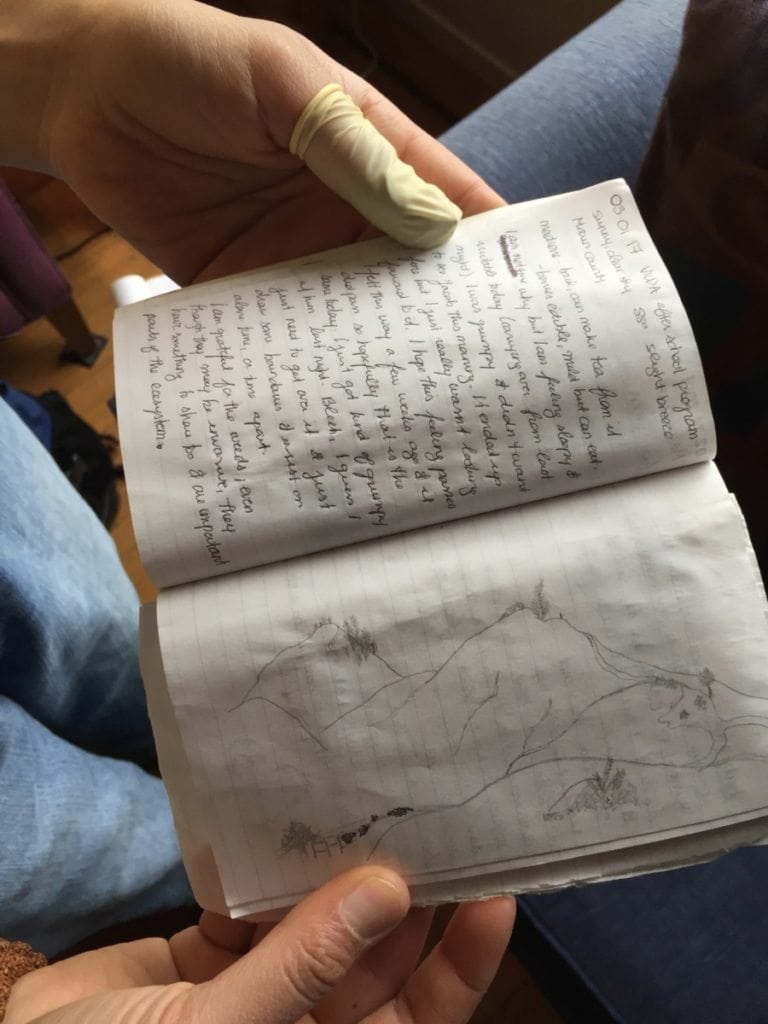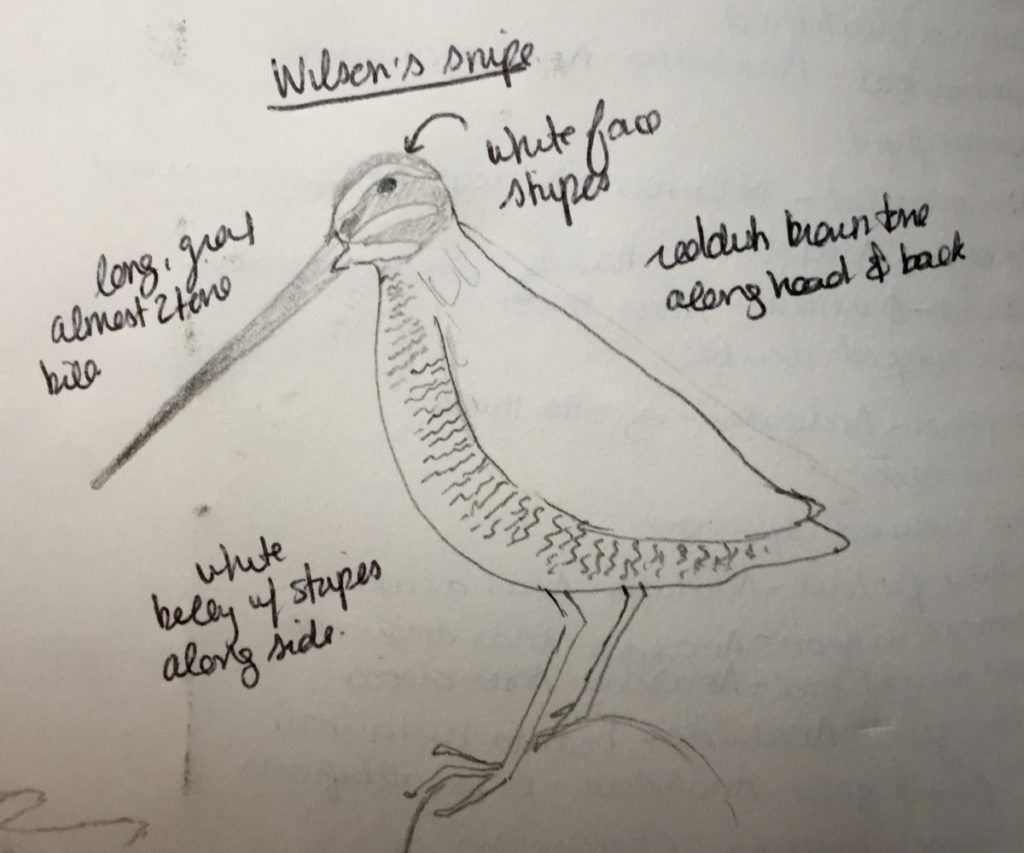Field journaling – not for artists only
Editor’s Note: Natasha Lowery is the instructor for our newest class, a five-week workshop in Appreciating Birds: Journaling and Field Sketching that starts on April 11. A 2016 graduate of Tulane University in environmental biology, Natasha may be our youngest instructor ever! Her enthusiasm and welcoming attitude will make this class rewarding for anyone who is fascinated by birds and nature, even people who feel “I can’t draw.”
By Natasha Lowery
Some of my fondest childhood memories are watching my mother sketch on the shores of the Russian River, and enduring my fathers never-ending science and math questions on our way to outdoor adventures. In my mind, my father stood for the pragmatic, rational aspects of science while my mom represented the emotional, and spiritual nature of artistic life. It wasn’t until I was introduced to field journaling that I was able to reconcile these two parts of myself.
People often view the arts and sciences as distinct entities. But many of the earliest naturalists were artists first, and their artistic skills allowed them to take detailed observations and notes about the plants, animals, and insects that they saw. Both the arts and the sciences have much to learn from each other, and field journaling is a way to break down that barrier and discover the enjoyment that can arise from reconciling the two.

If at this point, you are worried about your “limited”, or “nonexistent” artistic abilities — I use the quote marks because everyone has the potential for artistic prowess! — let me reassure you that this is not something to lose sleep over. In fact, the only prerequisites required to keep a field journal are the ability to see, hear, smell, and/or touch.
A field journal is essentially a catalogue of the observations and musings that you make while in the field. They can be as formal or informal as you please, though a few basic guidelines are encouraged to maintain consistency should your journals be used as a source of scientific data.


In my class, I will emphasize sketching, as I feel that it is a very intimate way to connect with nature. (And a very useful aid for bird identification!) Most of the exercises we will complete are tasked with activating the right side of your brain, something that the modern education system tends to de-emphasize. These exercises will help you to see, and to draw what you truly see. These skills are important for a variety of reasons from accurate bird identification, to understanding behavioral nuances among species and appreciating for the diversity that exists in nature.
Another important aspect of field journaling is sitting quietly in nature. Many times when we’re out hiking with friends, foraging, or birding, we tend to speed through the area we are visiting. We may pass through natural spaces without actually feeling a part of them.
Committing to keep a field journal means making the time to sit quietly somewhere and really observe what is going on around you. It means going from simply seeing and identifying a bird to observing its color pattern in detail, watching its behavior, listening to its song, and learning how it interacts with its environment. This increases your awareness and appreciation of the natural world. As an added bonus, when we sit quietly for a while, some of the more discreet animals have a tendency to emerge.

Maintaining a field journal has been and continues to be a journey for me. I am constantly experimenting with layouts, strategies, sketching styles, and methods. As I grow as a person, so does my field journal.
Herein lies the beauty of a field journal: an inherently scientific and artistic document that allows you to engage with the natural world on a more personal level and keep a record of your growth as a birdwatcher, naturalist, and human being. I hope to see you in class and in the field!
Our class in Appreciating Birds: Journaling and Field Sketching includes five Tuesday evening classroom sessions, and five three-hour field trips on the Sunday after each class. The class starts on Tuesday, April 11, and runs from 7 p.m. to 8:30 p.m. at the Ed Roberts Center (across from Ashby BART). The cost is $100 for Golden Gate Bird Alliance members or $120 for non-members. Click here to register, or see our Classes page for a detailed description.


